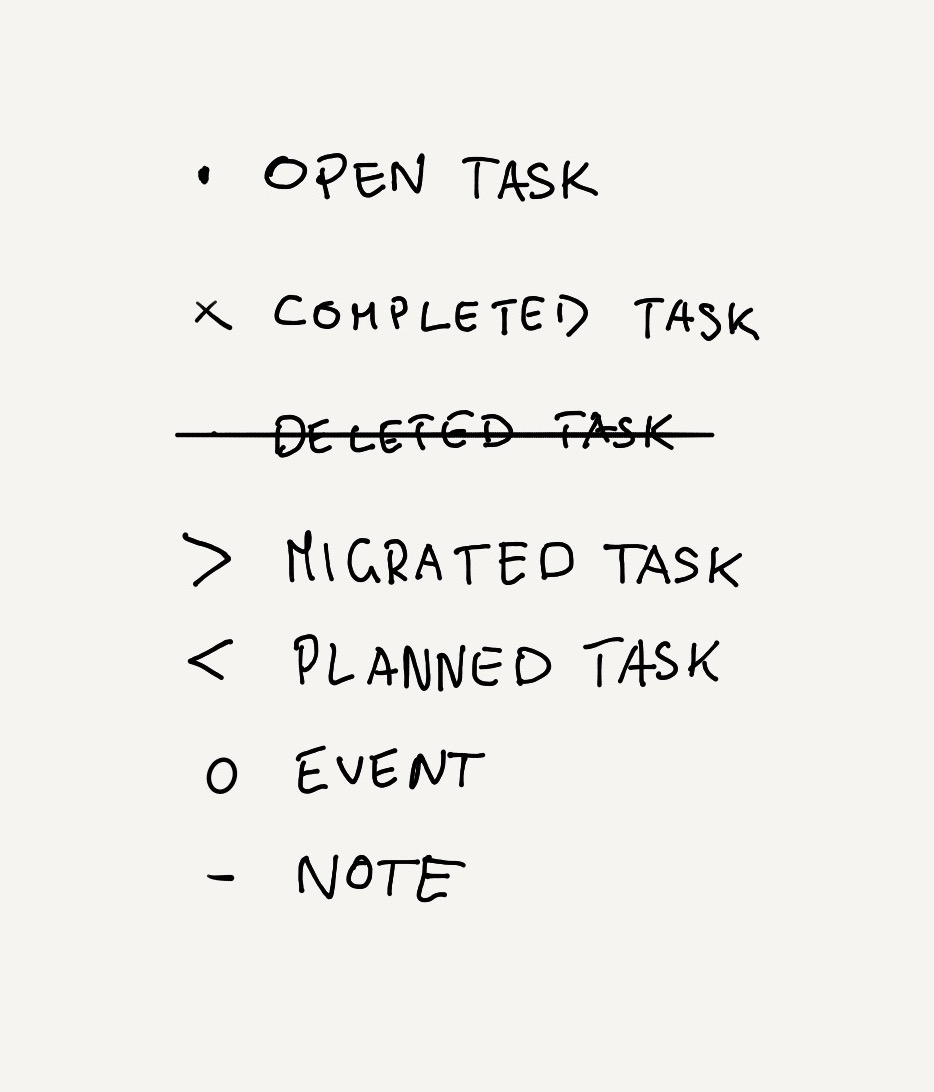In his book Atomic Habits, author James Clear describes those habits that lead to a drastic improvement in one's life as key habits. For me, journaling is one of those key habits. I picked it up about two years ago and every single day i feel the positive influence it has over me. I've gotten better at achieving my goals and focusing on those things that are valuable to me. I'm spending my time a lot more conciously than before and, rather than "going with the flow" and letting other people dictate my time, i'm choosing willfully the projects and tasks that are in my own best interest. My journal also lets me go back in time and find out which actions lead to me feeling fulfilled or not feeling that good. By looking over the actions and routines i did before i felt a certain way i now have a recipe to follow whenever i want to get back to this feeling.
I wanted to write this article to show you how i set up and use my journal.

I mostly follow the Bullet Journal technique, described by creator Ryder Carroll in his book The Bullet Journal Method. Because i see every new year as a new section in my life, a new chance to achieve bigger goals, i start with a new book at the beginning of every year. The book i use is from Leuchtturm 1917 and has 251 pages, usually just enough for the notes of one year. I bring the book and my pen everywhere i go, ready to log everything that i want to take note of.
From Goals to Tasks
At the end of the year i take some time, usually a whole day or even more, to first reflect on the current year and then start to plan the upcoming one. I take time to reflect on my values, how they might have changed, and what is important to me as a person.
I then define my goals for the upcoming year, which can be somehow abstract (become fit) or very concrete (finish a specific project). I then write them down and think of how to achieve them.
Some of them can be broken down in habits, which i then put in my routine (like go to the gym every morning), others can be broken down in multiple small chunks, like finishing a Proof Of Concept, creating a website or designing a logo. Those tasks i then put into specific months where i feel like i have the time and resources to work on them. This part of the journal is called the Future Log.

At the beginning of every month i then set up a whole page (can be more, too) dedicated to roughly planning out the month. I have the days of the month at the left side and i just insert all the events that i already know of. On the right side i have a list of tasks i would like accomplish this month. For that i copy the tasks from this month in the Future Log (which i filled out at the beginning of the year) and add to them the tasks that i can think of now.

At the beginning of every week i do the same, even more detailed and concrete now. Usually, there's always additional tasks and events showing up with each layer. Finally, at the beginning of a day, i fill in the tasks i wanna do today and write down all events happening.

Rapid Logging
During the day i work with a technique called Rapid Logging. The goal is to rapidly write down everything that comes up during a day, so i don't have to keep a lot of stuff in mind all the time.

This can be events, new tasks or simply notes. For me it's very different how much i log during a day but my most productive days are usually the most chaotic in my journal: there are notes everywhere, things are striked through and others are highlighted.
At the end of the day, or rather on the end of the week, i then go through those Daily Logs and transfer all open tasks to either the next week or back into the Future Log. If they turn out to be unimportant, i just strike them through, meaning i won't do them at all.
Lists
I also use my journal to keep lists, called Collections in the Bullet Journal lingo, of specific things. I have lists of books i've read, books i'd like to read, project ideas that came up, specific check lists when i start a new habit and many more.

Archive
At the end of the year, i finish up the journal with a personal retrospect and conclusion. I take some time to reflect on my goals for the year and whether i reached them, take a look at the sucesses and also the failures. I revisit the whole journal, page by page, and relive how i felt like during the different times in a year. I try to extract some experience from it that i then can apply in the future.
Usually after finishing a journal at the end of the year, i still bring it with me for the first few months of the new year. It's often handy to quickly take a look at previous meeting notes and other things i've written down. After that i put it into a shelf at home, ready to be opened whenever i feel like it. I never trash my old journals.
I hope this post gave you an impression of how i use a journal to be more organized and productive, and perhaps even inspired you to try it out for yourself. Feel free to share your feedback and remarks with me on Twitter.
